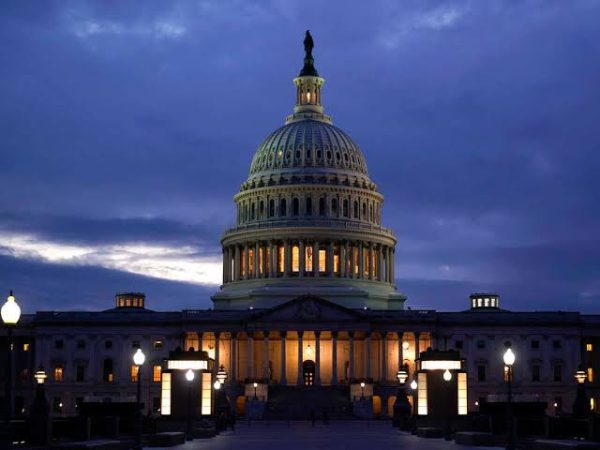
Senate Parliamentarian Immigration
Senate Parliamentarian immigration rulings often determine the fate of proposed immigration reform measures in the U.S. legislative process.
In the labyrinth of American legislative processes, the role of the Senate Parliamentarian often remains obscure to the public eye. However, its significance came into the spotlight during discussions on immigration reform. As debates rage on, understanding the Senate Parliamentarian’s role in shaping immigration policies provides valuable insights into the complexities of U.S. governance.
The Gatekeeper of Senate Procedures
The Senate Parliamentarian serves as the impartial guardian of legislative rules and procedures, ensuring adherence to the Byrd Rule—a set of guidelines governing what can be included in budget reconciliation bills. While not an elected official, the Parliamentarian’s decisions hold immense sway over the fate of proposed legislation, including immigration reform bills.
Implications for Immigration Reform
Immigration reform remains a contentious issue in American politics, with advocates pushing for comprehensive changes to address issues ranging from undocumented immigration to visa programs and border security. However, crafting legislation that satisfies the complex requirements of the Byrd Rule presents a formidable challenge.
Budget Reconciliation and Immigration
Recent attempts to include immigration provisions in budget reconciliation bills have encountered hurdles due to the Parliamentarian’s rulings. While budget reconciliation allows certain fiscal measures to bypass the filibuster, it imposes strict limitations on non-budgetary provisions. This has posed obstacles to including broader immigration policy changes within reconciliation bills.
Navigating Partisan Divides
The Senate Parliamentarian’s decisions on immigration have not been immune to political scrutiny. Both parties have sought to sway rulings in their favor, highlighting the inherent tension between parliamentary procedure and partisan agendas. As a result, the Parliamentarian’s office operates under immense pressure, balancing legal interpretations with political realities.
The Road Ahead
Despite challenges, the role of the Senate Parliamentarian remains crucial in shaping the trajectory of immigration reform. As lawmakers continue to grapple with this complex issue, understanding the constraints and opportunities presented by parliamentary procedure is essential. Collaborative efforts to craft legislation that aligns with procedural requirements while addressing the diverse needs of stakeholders offer a promising path forward.
In the ongoing saga of immigration reform, the Senate Parliamentarian emerges as a key figure shaping the contours of policy debates. While often operating behind the scenes, their rulings carry profound implications for the legislative process. As stakeholders navigate the intricacies of U.S. governance, recognizing the significance of the Parliamentarian’s role sheds light on the challenges and opportunities inherent in crafting meaningful immigration reform.
Frequently Asked Questions About about The Role of the Senate Parliamentarian in Immigration
1. What is the role of the Senate Parliamentarian in immigration reform?
The Senate Parliamentarian serves as an impartial arbiter of legislative rules and procedures. In the context of immigration reform, the Parliamentarian’s role includes interpreting the Byrd Rule and advising on whether proposed provisions comply with budget reconciliation requirements.
2. What is the Byrd Rule, and how does it impact immigration reform?
The Byrd Rule is a set of guidelines that govern what can be included in budget reconciliation bills. It stipulates that provisions must have a direct impact on the federal budget to be eligible for inclusion. Immigration reform measures that do not meet these criteria may be subject to removal from reconciliation bills.
3. Can immigration reform be passed through budget reconciliation?
Budget reconciliation allows certain fiscal measures to bypass the filibuster in the Senate, making it an attractive option for passing legislation with a simple majority vote. However, immigration reform faces challenges in meeting the strict requirements of the Byrd Rule, as many provisions are not directly budget-related.
4. What happens if the Senate Parliamentarian rules against including immigration provisions in a reconciliation bill?
If the Parliamentarian determines that certain immigration provisions violate the Byrd Rule, they may be removed from the reconciliation bill unless overridden by a vote of the full Senate. This decision can significantly impact the scope and effectiveness of immigration reform efforts.
5. How does the Senate Parliamentarian make decisions on immigration-related matters?
The Parliamentarian’s decisions are based on a careful analysis of Senate rules, precedents, and legal interpretations. While they strive to remain impartial, their rulings may be influenced by the nuances of legislative language and the intent behind proposed provisions.
6. What options are available if immigration reform cannot be passed through budget reconciliation?
If immigration reform cannot proceed through budget reconciliation, lawmakers may explore alternative legislative pathways, such as standalone bills or bipartisan negotiations. However, these avenues may face additional hurdles, including the possibility of filibusters and partisan gridlock.
7. How transparent is the Senate Parliamentarian’s decision-making process?
While the Parliamentarian’s office provides guidance and explanations for their rulings, the deliberative process itself is often opaque to the public. The Parliamentarian’s decisions are communicated to Senate leadership and lawmakers, but the internal workings of their office remain largely confidential.

Leave a Reply